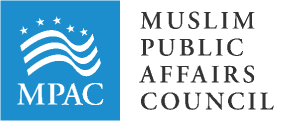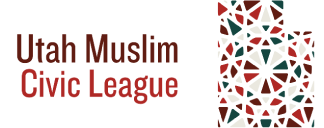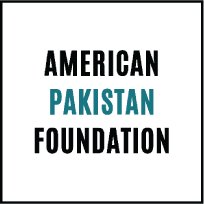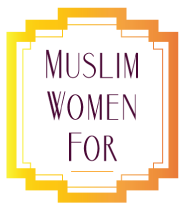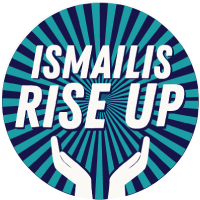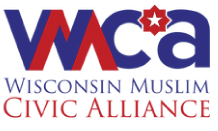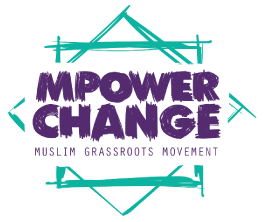IMPACT 2020
The Million muslim votes campaign voter turnout report

Letter from the Organizers
Dear Friends,
2020 was an incredibly pivotal year. The general elections were just one example of a definitive moment for our community. Through it all, we persevered, we organized, we showed up like never before—and over one million Muslim voters made their voices heard. We were honored to organize in service of this goal and could not have done this without our partners and without you.
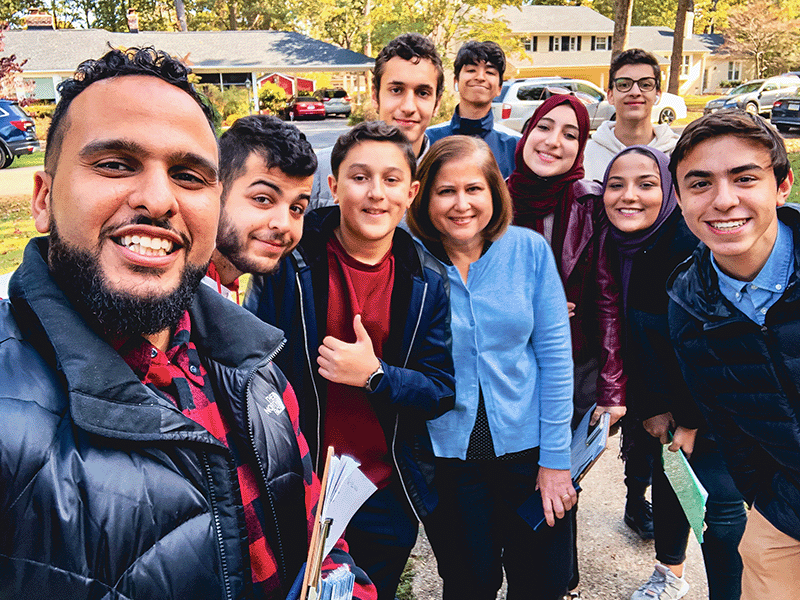
The drive for organizing is deeply personal for us. Organizing is our legacy from our Prophet (S) who lovingly uplifted a movement that centered on human experience and the most vulnerable in the community. We organize for the strength and the benefit of our community. We organize so that, beyond elections, we can strategically build for the policy change we wish to see for years to come.

The truth is, our work on the Million Muslim Votes campaign had been years in the making—from the day we walked into Emgage during the spring of 2017. Since then, we have put in countless weekends, tiring travels, and long hours developing our tools, practicing our strategy, building our institution, sharing our resources, learning from our mistakes, and enjoying a few wins along the way! The turnout we saw in 2020 was a long culmination of all of those efforts. Throughout the MMV campaign, we heard so many stories of voters in our community.
- Voters like 18-year-old Amina, who cast her official ballot for the first time, driven by the desire to fight for climate change.
- Voters like 68-year-old Omar, who left the home he had known in pursuit of the American dream, saving dollar after dollar, year after year, to gain citizenship and the right to vote.
- Voters like 42-year-old Sarah, who marks her election days the year before and is often seen working at the election polls after rallying her neighbors in the preceding weeks.
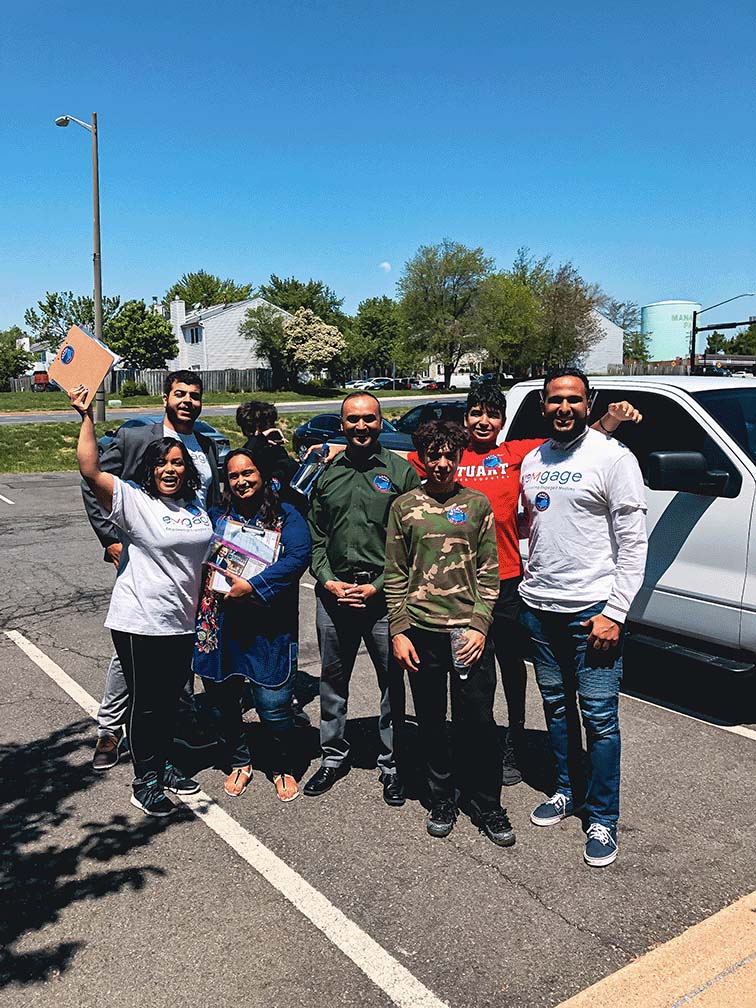
Each voter’s story was unique; they were, in truth, one in a million. Ultimately, the MMV campaign was built for community, by community. The MMV campaign was our celebration and a reflection of our determination to build elections as a vehicle of change for our community’s political will. We learned so much this year and are honored to have been a small part of the journey. The MMV campaign may be over, but we will continue to engage with purpose, organize with heart, and win every day.
In service and solidarity,
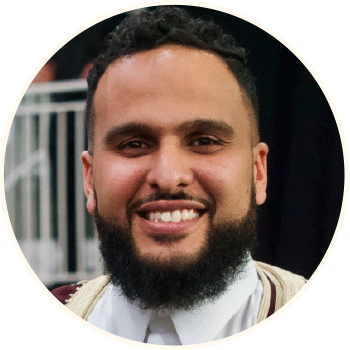

Mohamed Gula and Aysha Ahmed
Despite the challenges presented by the COVID-19 pandemic, the 2020 presidential election set a record for voter turnout nationwide, significantly changed how Americans participate in voting, and resulted in 66.8% of eligible voters casting a ballot—7 percentage points over 2016. For years the Muslim American community has focused on improving and building institutional capacity to change the way Muslim Americans engaged in politics to ensure that the Muslim American narrative is at the core of the social fabric of this nation. In 2020, Emgage launched and implemented the largest Muslim mobilization program in history, the Million Muslim Votes campaign. Alongside statewide and national Muslim American civic groups, we concentrated our efforts on 12 states that made up a total of 1.5 million registered Muslim American voters. Our organizing efforts included making 1.8 million calls, sending over 3.6 million text messages and over 400,000 mailers, knocking on over 20,000 doors, holding over 50 organizing training sessions, and activating 672 volunteers nationwide.
This effort contributed to 1,086,087 million (71%) registered Muslim voters casting a ballot
This effort contributed to 1,086,087 million (71%) registered Muslim voters casting a ballot, two percentage points over the 2016 turnout. Of the 1.5 million registered Muslim voters in 2020, 52% (779,793 million) voted early or via absentee ballots.
50
Training Sessions
672
Volunteers
20000
Knocked-on Doors
400000
Mailers
1800000
Phone Calls
3600000
Text Messages
This report takes an in-depth look at three core elements:
- the growth of the Muslim American electorate in the 12 states in which we organized;
- Muslim American voter turnout for 2016 and 2020, with a special focus on Michigan, Pennsylvania, Florida, Texas, Virginia, and Illinois;
- the pivotal organizing shifts necessitated by the COVID-19 pandemic.
Expansion of the Muslim American Voter Electorate
With its evolving demographic diversity, the Muslim American electorate poses a unique case study of voter participation. According to a 2017 Pew Research report, approximately three quarters of Muslims in the United States are immigrants or the children of immigrants; 82% are American citizens. Of those citizens, 40% are naturalized and 42% are citizens by birth. Historically, Muslim American voter turnout has been significantly lower than the general population turnout.
The MMV campaign was implemented in five states in which Emgage has chapters (Michigan, Pennsylvania, Texas, Florida, and Virginia), as well as Illinois, Ohio, Georgia, Wisconsin, New Jersey, North Carolina, and Utah. The campaign was also supported by a significant number of volunteers from the Emgage chapter in New York. These additional states were identified because of their significant Muslim populations and existing organizing infrastructure led by organizations such as the Illinois Muslim Civic Council, Muslim Public Affairs Council (MPAC), Muslim Women for in North Carolina, Wisconsin Muslim Civic Alliance, MPower Change, American Pakistan Foundation, and the Utah Muslim Civic League. Although the primary goal for the campaign was to turn out at least a million voters, we also wanted to promote and measure the increase of the Muslim electorate.
In the twelve states in which the MMV campaign operated, there was a 27% increase in the voter population from 2016 to 2020. The electorate grew by 319,310 registered voters.
Muslim American Demographics in 2020
States in which the MMV Campaign Operated
 Locations with Emgage chapters
Locations with Emgage chapters| State | 2016 Registered Muslim Voter Population |
2020 Registered Muslim Voter Population |
Sum (+) | Increase % |
|---|---|---|---|---|
| FL | 104,173 | 119,664 | 15,491 | 15% |
| GA | 57,108 | 79,345 | 22,237 | 39% |
| IL | 86,638 | 110,388 | 23,750 | 27% |
| MI | 162,373 | 206,050 | 43,677 | 27% |
| NC | 30,219 | 54,548 | 24,329 | 80% |
| NJ | 83,959 | 109,940 | 25,981 | 31% |
| OH | 106,961 | 135,249 | 28,288 | 26% |
| PA | 133,110 | 167,618 | 34,508 | 26% |
| TX | 229,204 | 308,587 | 79,383 | 35% |
| UT | 6,403 | 9,803 | 3,400 | 53% |
| VA | 194,188 | 201,667 | 7,479 | 4% |
| WI | 14,451 | 21,122 | 6,671 | 46% |
| Total | 1,208,787 | 1,523,981 | 324,793 | 27% |
MICHIGAN
206,050
Muslim Voters Statewide
Gender**Gender identity is a self reported data point. Therefore, the discrepancy that we see in our impact report is due to the number of people who chose not to identify their gender when they registered to vote.
Population
Age
MMV centered on three counties—Wayne, Oakland, and Macomb—with significant numbers of Muslim voters. These counties ultimately accounted for 39% of all ballots cast in Michigan. Our focus was on expanding the electorate and increasing voter turnout. A big takeaway from 2020 was the increase in the Muslim voter population of Wayne County, where the electorate grew by 22% from 2016 (14,037 registered voters). There was an increase of 20% (6,481 registered Muslim voters) in Oakland County, and an increase of 27% (5,725 registered voters) in Macomb County. Statewide, the Muslim electorate grew by 27% (a total of 43,677 registered voters), to 206,050.
PENNSYLVANIA
167,618
Muslim Voters Statewide
Gender**Gender identity is a self reported data point. Therefore, the discrepancy that we see in our impact report is due to the number of people who chose not to identify their gender when they registered to vote.
Population
Age
In Pennsylvania, we prioritized expanding the electorate. According to our field analysis, 80% of Pennsylvania’s Muslim voter population lives in eastern Pennsylvania. We centered our MMV program on the following counties: Philadelphia, Chester, Bucks, Lehigh, and Montgomery. In western Pennsylvania, the chapter worked in Allegheny County (Pittsburgh), where 18% of the state’s Muslim population resides. Statewide, there was a 26% increase in the Muslim voter population from 2016 to 2020. The electorate grew by 34,508 registered voters, to 167,618.
Florida
119,664
Muslim Voters Statewide
Gender**Gender identity is a self reported data point. Therefore, the discrepancy that we see in our impact report is due to the number of people who chose not to identify their gender when they registered to vote.
Population
Age
Our Florida team has invested heavily in voter registration efforts since 2016 with the intention of growing the Muslim American electorate. There was a 15% increase in the Muslim voter registered population statewide from 2016 to 2020. The electorate grew by 15,491 registered voters.
Texas
308,587
Muslim Voters Statewide
Gender**Gender identity is a self reported data point. Therefore, the discrepancy that we see in our impact report is due to the number of people who chose not to identify their gender when they registered to vote.
Population
Age
With offices in Houston and Austin, Emgage prioritized reaching the state’s rapidly growing Muslim voter population. There was a 35% increase in the registered Muslim voter population statewide from 2016 to 2020 and the Muslim electorate grew by 79,383 registered voters.
Virginia
201,677
Muslim Voters Statewide
Gender**Gender identity is a self reported data point. Therefore, the discrepancy that we see in our impact report is due to the number of people who chose not to identify their gender when they registered to vote.
Population
Age
New Census data shows that Virginia’s population is rapidly evolving with racial diversity. Since the last census, people of color have increased by 6% as a share of the overall state’s population. This is especially true for Virginia’s Congressional District 10 that includes Clarke County, Frederick County and Loudoun County, parts of Fairfax County and Prince William County. Our MMV team in Virgina centered its outreach on Loudoun County, Prince William County, and Stafford County, as well as northern Virginia (where 84% of Virginia Muslims reside). Muslim voters comprise 9–12% of the electorate in Districts 8, 10, and 11. Also noteworthy is that 20% of the Muslim electorate in Virginia is between the ages of 18 and 34 (9% in 2010). Statewide, there was a 4% increase in the Muslim registered voter population from 2016 to 2020. The electorate grew by a total of 7,479 registered voters to 201,677 registered voters.
Illinois
110,388
Muslim Voters Statewide
Gender**Gender identity is a self reported data point. Therefore, the discrepancy that we see in our impact report is due to the number of people who chose not to identify their gender when they registered to vote.
Population
Age
Although Emgage does not have an office in Illinois, we have a working partnership with Illinois Muslim Civic Coalition (ILMCC), vital to the MMV effort focused on reaching the state’s rapidly growing Muslim voter population. There was a 27% increase in the registered Muslim voter population statewide from 2016 to 2020 and the Muslim electorate grew by 23,750 registered voters.
Comparisons in Muslim Voter Turnout 2016 Vs. 2020
| State | 2016 Universe |
2016 Turnout | Turnout % | 2020 Universe |
2020 Turnout | Turnout % |
|---|---|---|---|---|---|---|
| FL | 104,173 | 71,526 | 69% | 119,664 | 82,704 | 69% |
| GA | 57,108 | 36,819 | 64% | 79,345 | 61,148 | 77% |
| IL | 86,638 | 53,609 | 62% | 110,388 | 64,691 | 59% |
| MI | 162,373 | 108,419 | 65% | 206,050 | 145,620 | 71% |
| NC | 30,219 | 23,352 | 77% | 54,548 | 38,892 | 71% |
| NJ | 83,959 | 55,717 | 66% | 109,940 | 73,660 | 67% |
| OH | 106,961 | 79,674 | 74% | 135,249 | 94,438 | 70% |
| PA | 133,110 | 100,879 | 76% | 167,618 | 124,875 | 74% |
| TX | 229,204 | 150,648 | 66% | 308,587 | 218,899 | 71% |
| UT | 6,403 | 4,341 | 68% | 9,803 | 6,328 | 65% |
| VA | 194,188 | 144,984 | 75% | 201,667 | 159,690 | 79% |
| WI | 14,451 | 11,056 | 77% | 21,122 | 15,142 | 72% |
| Total | 1,208,787 | 841,024 | 69.6% | 1,523,981 | 1,086,087 | 71% |
MICHIGAN
Muslim Voter Turnout
Turnout by County
Our organizing efforts leading up to Election Day 2020 helped turn out 145,620 (71%) registered Muslim voters, 6 percentage points over 2016 and 2 points over the registered general population of 69%, according to the Michigan Secretary of State. Our efforts focused heavily on early and absentee voting, and 84,059 (58%) of the 145,620 Muslim American voters in the state voted early or absentee. Despite the challenges posed by the pandemic, we were able to successfully pivot to digital and remote organizing approaches. Our team made 460,000 calls, sent over 2.2 million text messages, distributed over 18,000 mailers, and invested in digital ads compiling over 1.5 million impressions.
Pennsylvania
Muslim Voter Turnout
Turnout by County
A total of 124,875 (74%) registered Muslim voters cast a ballot in the 2020 election, two percentage points less than 2016. The slight dip in turnout, we believe, was caused by the notable 9 percent increase in registered Muslims. In 2020, 167,618 Muslims were registered to vote, vs 133,110 in 2016. In fact, the total number of Muslims who voted increased from 100,879 in 2016 to 124,875 in 2020. Statewide there was a record turnout for the registered general population; 79% according to the Pennsylvania Department of State. Our efforts focused heavily on early and absentee voting, and over 60,476 Muslims in the state voted early or absentee. This is a tremendous increase from 2016, when just over 4,700 voted early or via absentee ballots.
Due to the pandemic, we primarily relied on remote organizing, making 170,000 calls. We also held a number of virtual get-out-the-vote (GOTV) events. Recognizing the importance of the Black Muslim vote, we participated in a GOTV rally for Philadelphia Muslims and allies and held a number of voter registration events. We also sought to connect with Black voters in order to identify gaps and improve our data algorithm for this important demographic.
Florida
Muslim Voter Turnout
Turnout by County
A total of 82,704 (69%) registered Muslim American citizens cast a ballot in the 2020 election, the same turnout percentage as 2016. Although there may not have been an increase in statewide turnout, there was a 2 percentage point increase in turnout in the counties that we targeted. The Florida Division of Elections reported the highest turnout in 28 years for the general population of registered voters, at 77%. Our efforts prioritized heavily early and absentee voting. Over 72,852 Muslim American (88%) voted early or absentee.
Because of COVID-19, our team in Florida pivoted heavily to digital organizing, especially absentee ballot and ballot chasing. However, not all voters were familiar with state laws on voting absentee and early in-person; in addition, there was a robust misinformation campaign about mail-in ballots in Florida. In the statewide primary alone, more than 35,000 mail-in ballots were rejected.
Despite this, our team made over 400,000 calls, sent over 401,000 text messages, sent 370,000 direct mailers, and knocked on over 5,900 doors. Our Florida chapter also held a number of voter registration events and invested heavily in engaging and turning out voters in Miami-Dade, Duval, Broward, Palm Beach, Hillsboro, Pinellas, Osceola, and Seminole Counties.
Texas
Muslim Voter Turnout
Turnout by County
In 2020, 218,899 (71%) Muslims voted in Texas, a 5% increase over 2016. Our MMV team in Texas centered Harris, Dallas, Fort Bend, Travis, and Collin counties, where there was a 6% increase in turnout. The Texas Board of Elections announced the highest turnout in 28 years or the general population of registered voters, at 66%. Our organizing contributed to over 194,032 Muslim American early and absentee votes; 89% of Muslims voted early or absentee.
Despite the challenges due to the pandemic, our team in Texas made 200,000 calls, sent over 355,000 text messages, and hosted a number of voter registration events at mosques which were later turned into early vote and polling locations through the early-vote period and on election day. There was also heavy investment in ethnic media. The Texas team placed ads in four different Muslim-Arab-South Asian (MASA) newspapers with voting information for two weeks prior to the election. They hosted a daily program with Sangeet Radio 1460AM on Houston election information and an election hotline on election day and ran radio ads on Naya Andaaz for three weekends prior to election day. There were also news events and reporting on Muslim turnout with BOL TV and PakNews.
Virginia
Muslim Voter Turnout
In 2020, 159,690 Muslims (79% of registered Muslim voters) cast a ballot in Virginia. This was 4 percentage points higher than 2016 and 4 percentage points above the turnout for the registered general population according to the Virginia Secretary of State. Early and absentee votes totaled 115,690. Our Virginia team made 114,674 calls, sent over 258,947 text messages, and knocked on over 5,300 doors.
Illinois
Muslim Voter Turnout
The organizing efforts of Illinois Muslim Civic Coalition (ILMCC) leading into election day helped turn out 64,691 (59%) registered Muslim voters, 14 points less than the registered general population of 73% according to the Illinois State Board of Elections. A majority of ILMCC’s efforts were in Cook County, where 65% (71,478) of the registered Muslim population reside. ILMCC’s efforts concentrated heavily on early and absentee voting, and 44% (49,115) of the 110,388 Muslim American registered population voted early or absentee. Despite the challenges posed by the pandemic, ILMCC was able to successfully pivot to digital and remote organizing approaches and made 141,060 calls leading up to election day.
Organizing and COVID
The COVID-19 pandemic forced a massive, unexpected shift in voting methods; voter engagement efforts throughout the country moved largely to virtual spaces. This unexpected shift emphasizing vote-by-mail and early-vote methods required a comprehensive voter education strategy to ensure timely and accurate vote submission. Despite this new demand on organizers and institutions to amend their voter outreach, the turnout in communities across the country was strong—and this was especially true for the Muslim American community.

The MMV campaign steered efforts heavily toward a focus on ballot chasing by mid-year 2020. Ballot chasing—an organizing tactic that utilizes several methods of contact with voters to provide the most update information to register to vote, complete their ballot and submit their ballots by their state’s deadline—is particularly important for communities such as Muslim Americans; voters with lower voter propensity are prioritized less by large-scale organizing machines. Our campaign stepped in to prioritize Muslim American voters regardless of propensity scale to uplift the same people, who spoke in the same tongues and shared similar values. The ease of organizing digitally with a few clicks—rather than navigating travel, event locations, and permits—allowed new groups to participate in organizing.
Field organizing traditionally has relied heavily on in-person physical engagement, which has been particularly effective in Muslim spaces. According to Emgage’s estimates, an average of $60 to $120 is spent per individual commitment to vote. This includes physical and digital mailers, conversations at the door and over the phone, SMS/peer-to-peer messages, and local political engagements (i.e., rallies, GOTV initiatives). Although many organizations transitioned to digital organizing, this transition left a large gap, especially in states where there was limited capacity. Emgage sought to fill this gap by providing a centralized support system that packaged data access, training, and joint events to allow organizers across the country to pool their resources and efforts.
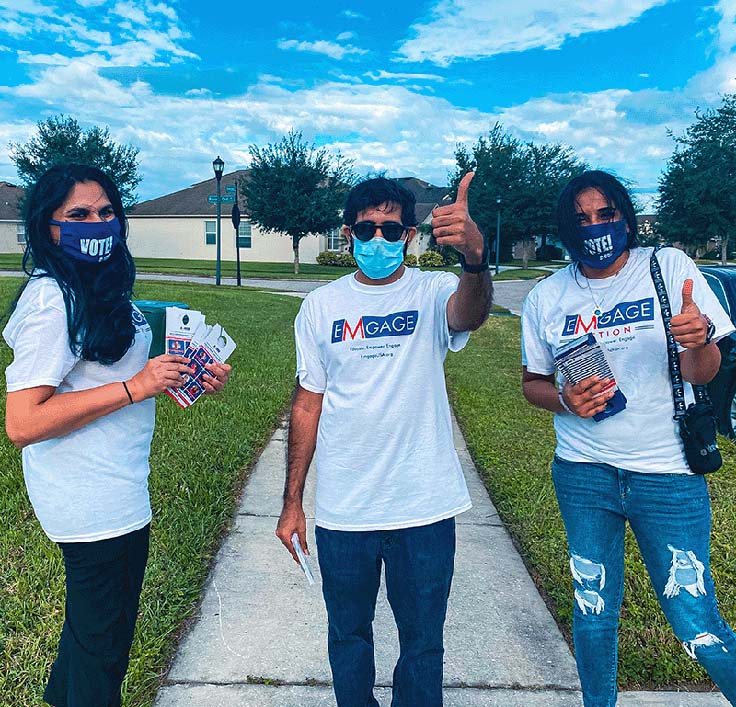
These transitions in voting and voter outreach make a clear case for the importance of investing in civic institutions. Civic institutions not only educate voters on how to participate electorally but also ensure that voters are able to carry out the act of voting by advocating against voter suppression tactics. All of our partners faced challenges as election day neared, juggling new ways of organizing, while also trying to verify and distribute the most accurate and clear information on early-vote laws, ID laws, translation services, absentee voting laws, and so on.

Methodology
Emgage combined methodologies in the planning and implementation of the MMV campaign, coupling data-driven strategies with extensive collaboration and consultation within our civic ecosystem. We used quantitative and qualitative methods to inform the strategic decision on the selection of our outreach universe. We also harnessed telemarketing tools and media to engage a broad set of audiences.
In validating the outreach universe, we used a purposeful sampling method to select 12 states. Voter records from the Targetsmart Voter Activation Network (SmartVAN) were instrumental in guiding our team in locating densely populated Muslim American locations. Records from recent past elections gave us key insights into the Muslim community’s voting patterns. Data models were employed to verify the accuracy of the Muslim records sourced. At this stage of our intervention, what was required from the MMV team was to align its resources and strategies to get out the vote. However, it is important to note that the data are not self-reported, which makes the algorithm imperfect. The algorithm is unable to recognize a significant number of Muslim Americans who may not, for example, have a “Muslim-sounding” name.
We used telemarketing to propagate the campaign messaging to our Muslim audience. This approach made use of data tools such as Spoke, ThruTalk, ThruText, Phone2action, and everyaction. Because of the COVID-19 pandemic, the campaign had to pivot its core operations to a digital capacity by April 2020, and we increased our investment in such data tools over time.
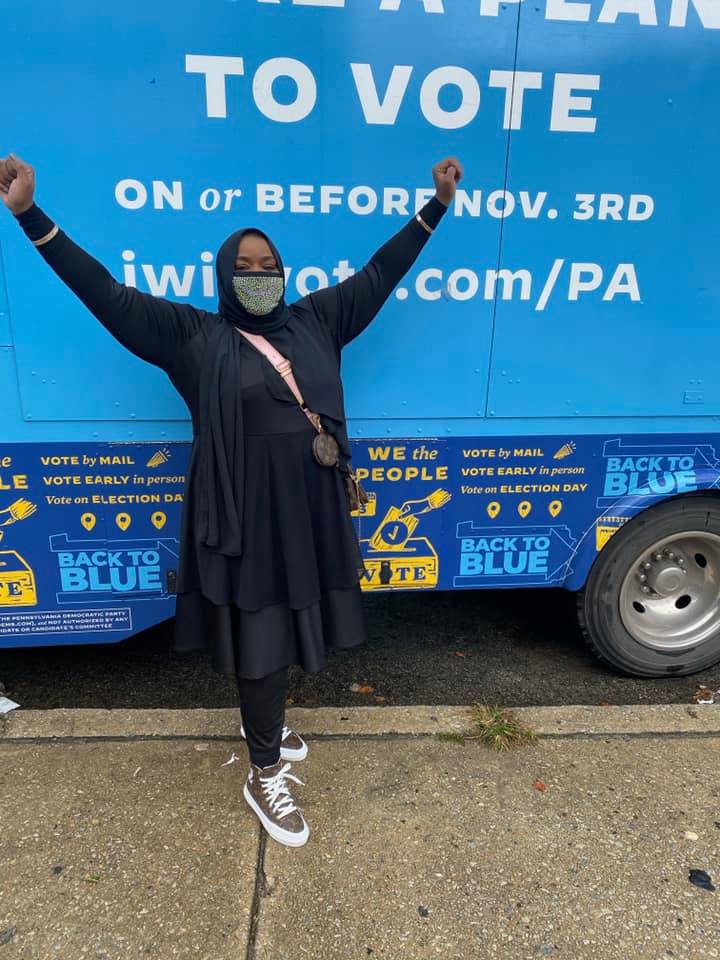
Outreach itself was rooted in the community. Operations were always reviewed and adapted in conjunction with local partners to support the sustainability of existing grassroots efforts. These operations included regional considerations, script messaging, data building, and institutional development. As the campaign improved turnout, we worked to improve the functioning of institutions along with it.
A smaller but significant component of our operation was a heavy focus on ballot chasing. Ballot chasing is the process of confirming that voters are informed of their voting options and have completed the process per state deadlines. Ballot chasing often culminates in several layered methods of contact with voters to ensure that action is taken. Ballot chasing was extremely important in 2020 given the huge shift in absentee voting and vote-by-mail patterns across the nation. Ballot chasing mitigated simple issues such as confusion of ballot drop-off locations or submission issues such as a required secrecy envelope provided with absentee ballots. Overall, ballot chasing was a smaller but significant reason for large voter turnout because it built voter confidence by verifying the process of ballot submission and individuals’ plans to vote i.e., date, time, mode of transportation.
Target states were selected because of their Muslim voter population density and the presence of Emgage chapters or partner organizations. In a bid to verify the Muslim voting-age population in each state, we employed certain data-matching algorithms:
- Civis Analytics and Targetsmart scores
- The Tom K. Wong (Director of the U.S. Immigration Policy Center at the University of California, San Diego) ethnicity algorithm
- The Emgage name-matching algorithm
- Catalist Data (America Votes and State Voices)
Each set of algorithms were run against states’ voter registration databases to capture the required records. The accuracy of the Muslim American voting-age population figures was critical to the MMV campaign because the campaign is specific to the Muslim community. Harnessing these algorithms proved useful as it provided essential population demographics insights such as the ethnicity, race, and religious grouping for each state.
Campaign Partners
A key component of the MMV campaign was the network of participating organizations that worked together to achieve these historic results. Partners were granted data access and support to organize and turn out voters in their communities in accordance with their own capabilities. We are thankful to the following for their partnership and commitment to building collective power through increased civic engagement:
- Illinois Muslim Civic Coalition
- Muslim Public Affairs Council
- Utah Muslim Civic League
- American Pakistan Foundation
- Muslim Women For
- Movement Voter Project
- Poligon
- Ismailis Rise Up
- Wisconsin Muslim Civic Alliance
- MPower Change and #MyMuslimVote

